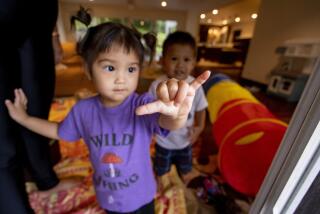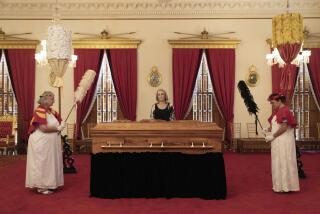Hawaii: Replicas of royal garb — with 250,000 feathers — go on display
- Share via
As Hawaii celebrates King Kamehameha Day on Wednesday, a recently created feather cape, helmet and sash, which recall the monarch who is being honored across the state, will go on display.
The featherworks were commissioned by Hawaiian Legacy Hardwoods and created by artist Rick San Nicolas. They use nearly a quarter-million pheasant feathers in the re-creation of garments worn by Kamehameha, who united the Hawaiian Islands by 1810. He died in 1819. He is honored each year on June 11, a state holiday.
In Hawaii, feathered garments denoted status and as such could be worn only by the elite. The ahu ula (cape) and mahiole (helmets) were worn by the most powerful chiefs, or alii, and were sometimes given as gifts. Capt. James Cook received several in the late 1770s from Kalaniopuu, the main chief of the island of Hawaii, according to the book “ ‘Ano Lani” by Linda Ching.
Some of the birds that provided the yellow, red, black and brown feathers for the original garments are extinct. Hawaiian Legacy Hardwoods, or HLH, a business that focuses on sustainable wood harvesting, became involved in the project to raise awareness for habitat restoration and reforestation. It is working to restore koa forests that once belonged to Kamehameha (who became King Kamehameha I or Kamehameha the Great) on the slopes of Mauna Kea on the Big Island.
The featherworks display, which summons the spirit and style of Kamehameha, will be at the Four Seasons Hualalai in Kailua-Kona on the Big Island. (The Four Seasons Hualalai has pledged to plant a half-million trees as part of HLH’s reforestation project.)
Artist San Nicolas and his assistants put more than 4,500 hours of work into the project, he said in a statement. How big an undertaking is that? The American Time Use Survey, by the Bureau of Labor Statistics, shows that Americans spend 8.8 hours a day on work and related activities. At that pace, the creation of these pieces would have taken 511 days.
The time-lapse video, above right, shows the compressed version of their labors.
More to Read
Sign up for The Wild
We’ll help you find the best places to hike, bike and run, as well as the perfect silent spots for meditation and yoga.
You may occasionally receive promotional content from the Los Angeles Times.







